Things are getting (slightly) better—at least that’s what the numbers say.
In 2002, a New York State Council on the Arts study by Susan Jonas and Suzanne Bennett showed that 17 percent of all works produced on the city’s stages were written by women. There were no more reliable statistics until this August, when the Lilly Awards and the Dramatists Guild released “The Count,” a report on the gender of playwrights programmed in major nonprofits across the country over the past three seasons, which showed that the number of works by women was 22 percent. Our own American Theatre tally, culled from upcoming seasons at Theatre Communications Group member theatres, puts the figure at 21 percent, meaning we’re at least holding steady for the next year.
“It’s really encouraging,” says playwright Marsha Norman of the new figures. Norman cofounded the Lilly Awards, an organization dedicated to celebrating the work of women in theatre, with playwright Julia Jordan, who spearheaded the Count. “After the NYSCA study, the numbers were good for a couple of years but then they fell off. What we need to make sure doesn’t happen this time is that we don’t slip back.”
Look here for a list of 78 theatres that have achieved gender parity (or better) in their 2015-’16 season.
Of course, 22 percent isn’t 50/50 parity—it’s not even halfway there—but with the recent upsurge of groups like the Kilroys, an L.A.-based cohort of playwrights and literary managers who have released a list of unproduced or once-produced plays authored by female or transgender playwrights for the past two years; gatherings like the Statera Conference in Utah, where leaders in the industry gathered to discuss the issue; and events like the D.C. Women’s Voices Theater Festival, for which 51 local theatres are producing a world premiere by a female writer as part of their season in September and October, it at least seems like our field’s gender disparities and inequities are on everyone’s minds.
“I’ve had conversations with artistic directors who have said, ‘I didn’t know this was a problem,’” says Arena Stage artistic director Molly Smith of asking D.C. theatres to participate in the festival. “They also didn’t understand it was an issue with women in theatre. Very few women run large organizations.”
But for all the positive movement toward gender parity, there’s also an entirely understandable tendency toward calling out the still-stark gender disparity, which often takes the form of social-media shaming of institutions with markedly male-dominated programming. In a field where the statistics remain so skewed, that criticism has its place, of course, but it’s not the whole story. As Norman notes, there are several regions whose gender-parity record is better than the national average (Washington, D.C., Chicago, and Philadelphia, to name a few), and to her, that means that somebody (or a few somebodies) must be fighting for it on the local level. “It’s wonderful to know that they’re there, and we can actually see their impact.”
In the rush to call out those who are getting it wrong, in short, we often overlook the leaders and theatres who have been doing it right—the theatres whose numbers help make up that 21–22 percent, and whose methods other companies could learn from.
The theatres that most often are left out of the gender-parity discussion, ironically, are the female-identity-focused theatres—Women’s Project Theater and New Georges in New York, Moxie Theatre in San Diego, Calif., or the Tennessee Women’s Theater Project. Although these theatres all share a mission to create professional opportunities for women in the theatre, they also serve as a crucial launchpad for female-identified artists and an important entryway to the “pipeline” for female-authored work.
You may have heard of some of the artists who’ve worked at Women’s Project, many as part of its lab—a two-year development program for emerging playwrights, directors, and producers. Alumni include Laura Eason, Katori Hall, Quiara Alegría Hudes, and Pam MacKinnon, among others. This year, Women’s Project artistic director Lisa McNulty has created the Pipeline Festival, for which she has packaged producers, directors, and playwrights from the lab together to present new plays, five in total.
“I see us as an institution that’s getting women artists for other theatres to produce on their stages,” says McNulty, who took the lead at Women’s Project a year ago. “Providing artists a very visible platform and launch into the field is the biggest way that we get work out into the world and into other theatres. I don’t want the work to end with us.”
Case in point: Tanya Barfield’s Bright Half Life received its world premiere at Women’s Project last season, and will have productions at three theatres in the coming season, including Magic Theatre in San Francisco and Profile Theatre in Portland, Ore.—two theatres committed to gender parity, though not specifically mission-focused on female writers. And Martyna Majok’s Ironbound will be produced as part of Women’s Project’s coming season (in a coproduction with Rattlestick Playwrights Theater), following a production at Bethesda, Md.’s Round House Theatre as part of Women’s Voices.
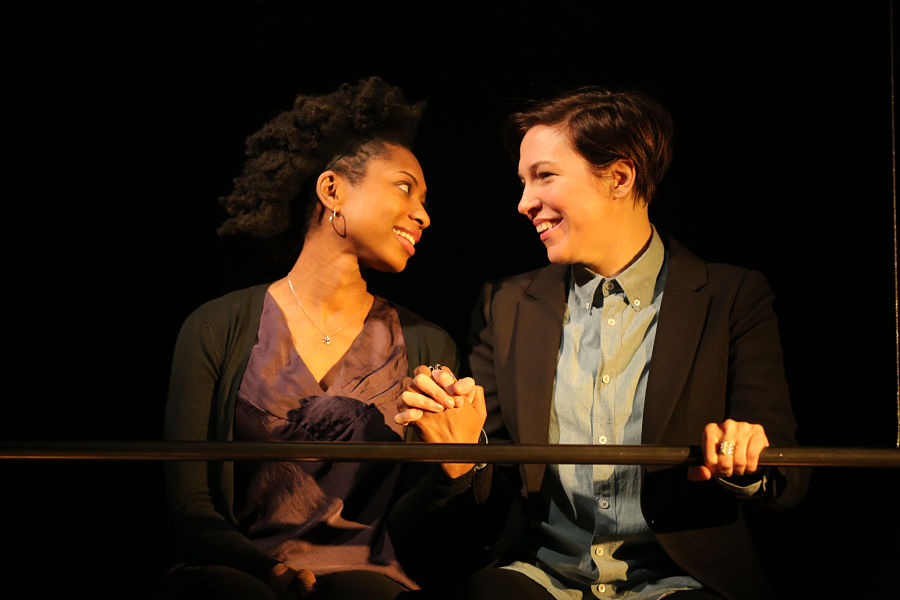
Round House artistic director Ryan Rilette is semi-responsible for the omnipresence of the term “pipeline” in these discussions. In the spring of 2014, he made a controversial comment at a panel of D.C.-area artistic directors called the Summit, opining that the reason there were fewer female-authored plays onstage was that there were fewer in the “pipeline.” Rilette’s comments were taken a little out of context, as he was referring to commercial works coming from Broadway and London being largely written by men. It should also be noted that Round House, which Rilette has led since 2012, is committed to gender parity, and achieved it both last year and for this upcoming season.
“When you talk about parity, there are not as many canonical works by women, you can’t revive the same plays over and over again, and we have to do a lot more world premieres by women to get to the point where it starts to right itself,” says Rilette, adding that he hopes the 56 world premieres as part of Women’s Voices will go on to be produced across the country. “There’s not enough funding,” Rilette continues of the risk that comes with a world premiere, which is high no matter the writer’s gender. “People often talk about the top-down model of theatre in America, and we’re still so based out of New York. How do we change that conversation?”
Ask anyone which artistic leader of a major theatre has a good track record on gender parity, and the name of Tim Sanford of Playwrights Horizons comes up continually. When Sanford took the helm of the theatre in 1996, he vowed to produce at least one female writer each year in a season of six plays, “which sounds kind of pathetic now, but at that point, I might have been a pioneer in that regard,” he explains.
But Sanford doesn’t want to hog the credit.
“It’s gotten easier to include women as more women are admitted to the playwriting programs—the prestigious ones that really provide the American theatre with its future playwrights,” he says. “I feel the parity may have started there.”
Over time, Sanford has garnered an impressive track record of seasons dominated by strong female authors like Amy Herzog, Annie Baker, Kirsten Greenidge, and Anne Washburn, though he admits that sometimes he has to be careful about the plays he chooses; like any leader, he selects the plays that speak to him, but after an extended time in the position, he’s become more aware of his innate biases.
“The longer I’ve been in the business, the more I can factor in my subjectivity—meaning having a personal emotional response to the work—that in no way rules out women,” he says. “I’ve heard people say, ‘Maybe women or people of color write less Aristotelean well-made plays,’ and that all just seems cockeyed to me. And I don’t know why it would be a problem anyway.”
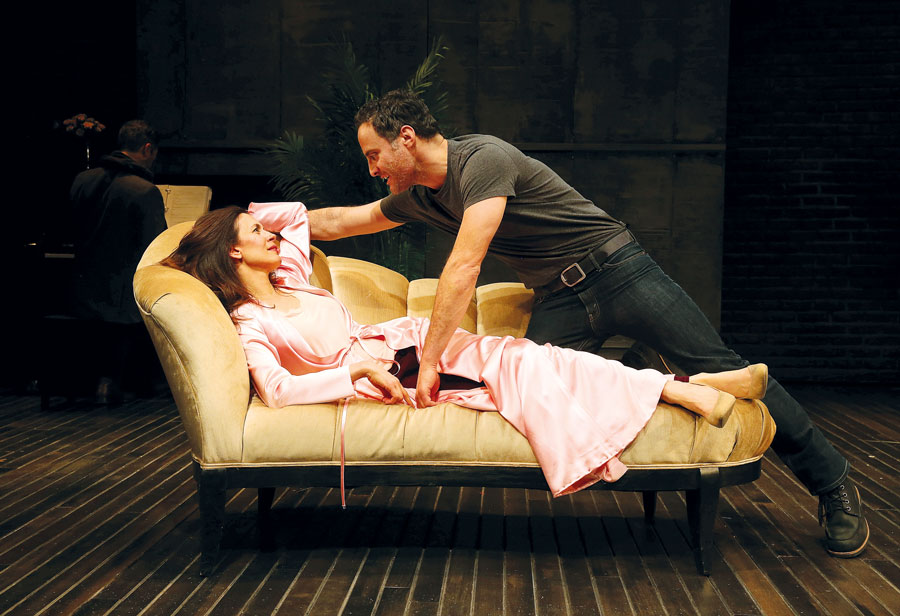
Sanford also acknowledges that his theatre’s focus on new work may allow him to reach parity more often. Our own research suggests that there are more female-authored plays produced in the new-play realm (defined as anything that premiered after 2005): The figure is 29 percent, while revivals are 13 percent (premiered between 1965 and 2005) and classics are 5 percent (premiered before 1965).
Michael Kahn, artistic director of the Shakespeare Theatre Company in D.C., acknowledges that he first became aware of the problem when he joined the theatre in 1986 and actors complained about the lack of available female roles. Kahn is one of the seven organizing artistic directors of Women’s Voices, alongside Smith and Rilette, and although his theatre’s roster of productions by female playwrights is paltry, he points out that both of the commissions he has currently are by women, one of them Yaël Farber, whose adaptation of Salomé is part of the festival. He also adds that hiring female directors is another important way to get female artists in the door—an increasingly popular solution at classics-based theatres, especially ones with Shakespeare in the name.
Not that there aren’t great old plays by female authors (see “The Other Canon”); in fact, Kahn mentioned that the theatre’s 2014 ReDiscovery Reading Series unearthed five plays by women written in the first half of the 20th century. Kahn also noted that two of the figures who launched the resident theatre movement—Zelda Fichandler, cofounder of Arena Stage, and Nina Vance, founder of the Alley Theatre in Houston—were women, but that in most cases, the American theatre field has simply added to “a long line of history of theatre being made by men.”
Kahn hopes that Women’s Voices will spark change in the theatres across D.C., his included, and not simply be a token effort. “I hope that all of them won’t just do this once and get their brownie points and leave,” he said.
At Yale Repertory Theatre, the affiliation with the Yale School of Drama’s strong playwriting and acting programs means that artistic director James Bundy and associate artistic director Jennifer Kiger feel equally pulled to produce classic and new work, both for their audiences and for their students’ training. And while the theatre’s 2015–16 season boasts three new plays by women (Paula Vogel, Jiehae Park, Jen Silverman) and two standards (Beckett, Shakespeare), Bundy is less interested in ticking boxes at his own theatre than in larger trends in the field.
“If I were exclusively thinking about parity, I would be shooting more for having the same numbers of men and women directors or men and women playwrights,” says Bundy. “I’m thinking a little bit more about equity. So when I have ‘too many women’ directing in a season or ‘too many plays written by women,’ I don’t regard that as a season that is contributing to gender parity—I view that as a season that is contributing to gender equity. In the current American theatre, producing tons of plays by men directed by men is not a particularly progressive place to be.”
Kiger runs the Binger Center for New Theatre, which commissions artists, and many of those commissions lead to productions on Yale Rep’s stage. (This season, Indecent, conceived by Paula Vogel and Rebecca Taichman, will premiere in a coproduction with the La Jolla Playhouse; it was a co-commission with the Oregon Shakespeare Festival.) Of the 52 artists Yale Rep has commissioned with the Binger Center since its start in 2008, 32 of them are female.
“For me, a measure of success of a commission is that it results in a play that can and should be produced,” says Kiger, who has been at the theatre for 10 years and says she has always seen a commitment to equity and inclusion on all levels. “Because we’re commissioning more women than men, that just gives us more opportunities to be looking at scripts from women when we’re looking at the new plays that we might be producing in our season.”
But for the American theatre broadly to reach not only parity but equity, many leaders are going to need to have a change of mind and a change of heart. Admitting fault is not easy, but PJ Powers, artistic director of TimeLine Theatre Company in Chicago, does it gladly. For a board presentation this year, Powers went through his theatre’s 18-year history and tallied the percentages of female writers as 20 percent over time, which is as “woeful as the national average.” He felt the board should be aware of the discussion in the field to have more people to keep him accountable in his leadership and programming decisions.
Powers must have already been thinking about this, because the company’s four most recent seasons (including the upcoming one) feature 56 percent of plays by women; last season, 11 out of the 14 playwrights working at or presented at TimeLine were female. This number comprises one out of four productions last season, all four TimePieces staged readings, two developmental workshops (one of which, Spill, written and directed by Leigh Fondakowski, will be produced in the 2015–16 season), and four out of seven writers in the company’s playwrights collective.
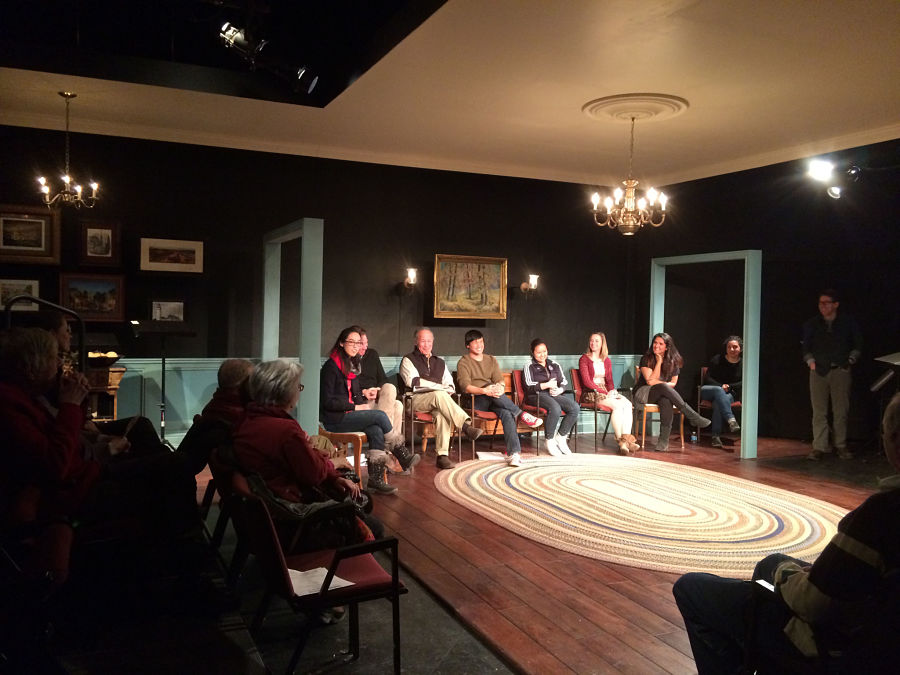
Some members of the board wanted to tout this progress, but Powers felt differently.
“While I’m really proud of what we have planned for this coming year, and I think that it will continue to be a focus for us, I don’t know what the following year will look like,” says Powers. “If you pat yourself on the back, you have to be willing to take the hit.”
Patrick Dooley at Berkeley’s Shotgun Players had a different strategy with his 2015 season. Like Powers, Dooley admits that the gender breakdown of his season programming wasn’t always on his radar, but in response to a “major American theatre company” announcing a season of all men, Dooley rolled out a season of all women for 2015. He didn’t initially think it was a good idea.
“I first thought, ‘That’s crazy!’” Dooley admits of the time one of his female company members suggested the concept. “My own reaction to my reaction was one of those things that made me realize that it would be a way to participate in the conversation, and a way to raise awareness with our audience.”
The theatre’s season is a veritable selection of older classics and more recent hits, from Aphra Behn and Agatha Christie to Caryl Churchill and Sarah Ruhl. While Dooley wanted to do more newer plays, negotiating rights as a smaller theatre became difficult, and so he created the Champagne Reading Series—a lineup of six new plays (though many previously produced) by women, each of which correlates to one of the full productions. He also adds that he plans to aim for parity or better in all of his seasons moving forward.
In contrast to TimeLine, Shotgun made sure their female-focused programming was on the marketing materials, and according to Shotgun managing director Liz Hitchcock Lisle, announcing a season of women led to a spike in subscriptions. “People do care!” Lisle adds.
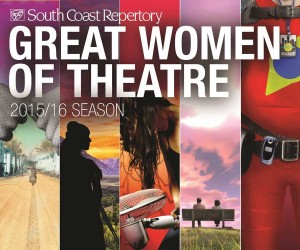
South Coast Repertory in Costa Mesa recently tweeted, “Did you know you can program a season w/ more than just male playwrights & directors? We did…” alongside an image touting their season as “Great Women of Theatre.” While this is neither an outright marketing initiative nor the actual theme of the season (that would be “The Art of Great Theatre”), the posting touts that 50 percent of the announced artists in the “Great Women” offering are female.
“Great Women of Theatre,” it turns out, is a create-your-own-subscription offer for audiences to group the plays in the season that are written by and/or directed by a woman. These focused subscription offers—which might also be tailored to include all the comedies in the season, or all the new plays—are successful, according to SCR’s public relations director, Tania Thompson. This is not the first time the theatre has offered one grouped around female artists.
But some theatres choose a subtler route. Women’s Project doesn’t trumpet the gender of its artists in any promotional materials, and the company’s name appears as simply “WP” in several places. “Nobody ever bought a ticket to a new play to help somebody,” says McNulty. “I love the fact that we’re a women-focused theatre, but I’m trying to market work in a way that focuses on the work’s quality, rather than its identity.”
Playwrights’ Sanford agrees; to his dismay, he says, the only thing that still really sells a show is a good review. “Do the reviewers notice? Do they care?” Sanford wonders. “When I did a season with five plays by women, did I see a spike in my subscriptions from women? No, of course not. The ticket-buying public, for most part, is not thinking about it. They go to the plays that get a good review.”
Sanford names Marlane Meyer as an example; her play The Patron Saint of Sea Monsters at Playwrights was panned by the New York Times and subsequently received fewer future productions. “I wish people would read everything and make their own choices,” adds Sanford. “They don’t need a Times quote in their city if their audience believes in them.”
That’s the kind of relationship Loretta Greco, artistic director of San Francisco’s Magic Theatre, encourages. “Our audience wants to see five great plays, and for me and for any producer you’re speaking to, you have to understand that they don’t know any of the plays,” Greco says. “They’re buying their trust in what the Magic does. It’s rare for us to have a New York Times quote.”
The company’s 2015–16 season comprises all female writers, including two world premieres by writer-in-residence Mfoniso Udofia. But the Magic didn’t market it as a “season of women,” and in fact, just lists the last names of all the playwrights on the marketing materials, as if to eliminate the writers’ gender from the conversation.
Still, Greco does note that in her eight-year stint at the head of the company, every five-star review the theatre has received from the San Francisco Chronicle has been for a work by a woman and/or a person of color.
“I find that extraordinary,” she adds. “There are assumptions about writers of color, and there are assumptions about women. For us, it was just great work, but that’s the work that’s actually gotten the most critical and box-office acclaim. I just try to keep putting that out there because I think numbers matter.”
Indeed, for all the concern about the lack of gender diversity in the field, there are other ways it falls short of a full representation of the U.S. “My big deal is people of color,” says the Arena Stage’s Smith, who laments that the percentage of writers of color in the D.C. Women’s Voices festival is less than 10 percent. “When we talk about diverse voices, it always has to include race, and I think that’s one thing for me that’s a weakness of this particular festival.”
When Sarah Bellamy assumed the position of co-artistic director of St. Paul’s Penumbra Theatre alongside the company’s founder, her father, Lou Bellamy, the theatre’s number of productions by female playwrights ticked up. But Sarah says she’s just following in the footsteps of her dad, who she says has always been “very dedicated to black women’s voices being central to the experience.”
Still, it’s striking that the first season at the theatre since Sarah took the position in early 2014 was dedicated entirely to female playwrights, and the upcoming season has two out of five plays written by women. She also names Chicago’s Congo Square Theatre Company and New York’s New Federal Theatre as two other theatres of color with gender parity as a goal.
For Bellamy, the parity discussion is neither new, nor is it narrowly defined. During the Civil Rights Movement, she says, the goal of equality was always understood to mean giving all voices equal weight.
“We didn’t divide our communities by male or female, so there needs to be a nuanced conversation about what parity looks like for theatres of color,” she explains. “As we think about gender parity, we really have to keep that racial equity piece, and the LGBT piece.” The bottom line, she says: “If you look around the room and everybody looks exactly like you and thinks like you, then you’re in trouble.”
Sarah Gubbins, a playwright and a member of the Kilroys, wants to broaden the consideration to more gender-diverse seasons, incorporating writers who don’t identify on a gender binary. The Kilroys added designation “trans*” to the writers who could be considered for nominations this year to encompass evolving definitions of gender. If the Kilroys’ goal is to do away with the “scarcity mentality”—the notion that these plays don’t exist—gender-nonconforming artists need that just as much, if not more, than underproduced female-identified writers.
“When you’re talking about gender parity, it became clear to us that parity became a diverse expression of gender that is something other than cisgender,” says Gubbins. (“Cisgender,” for the uninitiated, refers to people whose birth-assigned sex matches their self-defined gender identity.) “We are in a moment where our exploration of gender as a popular culture is changing rapidly. There is this notion of gender fluidity, and getting away from a gender binary is rather new to the popular culture.”
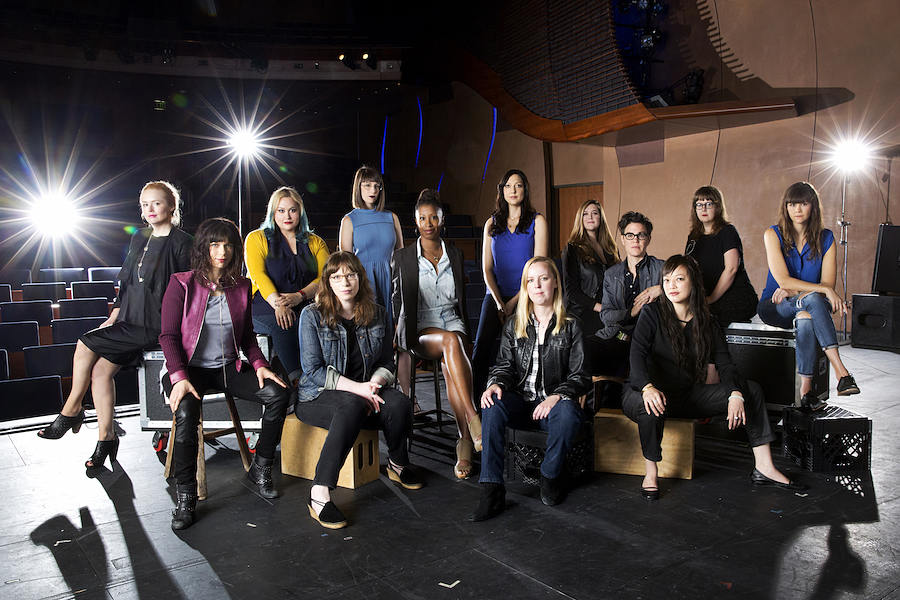
Some artistic directors, like Shawn LaCount of Boston’s Company One Theatre, are aware of shortcomings in this area and want to change. While his theatre has an impressive diversity record—three of the four plays in the 2015–16 season are by female authors—he wants to continue to expand his outlook.
“I think we’ve told stories that have connected to trans experience, but I don’t think we’ve worked with any writers who self-define as neither male nor female,” says LaCount. “It’s dangerous to pat yourself on the back about these things, because there’s a lot of work to be done. But we are intentionally trying to be inclusive and diverse.”
One of the ways LaCount is doing that is through the PlayLab program, a collaboration with Boston Center for the Arts, where three female writers are developed each year, with at least one of those being led toward production. (Lauren Yee’s Hookman and Kirsten Greenidge’s Splendor are two that started in PlayLab and made it to the company’s stage.) This year, the program transitioned to a master class model, with some men included (the men had to pay to participate; the women did not), but the program recently lost some of its funding. While LaCount is searching for more support, he notes that the female focus of the program has not attracted funders.
There is some money, though, for theatres that are doing parity well and strive to do it better. La Jolla Playhouse received a $1 million endowment fund established by trustee Paula Marie Black to support female writers and directors at the theatre, which ranges from new-play commissions to establishing childcare for artists at the theatre.
Norman says she wants the Lilly Awards to start advocating with large-scale foundations that fund many of the nonprofit theatres across the country, hoping to make the point that they shouldn’t “give millions of dollars to a discriminatory organization.”
While the trends are improving, Norman still sees much room for work. Though productions of plays by women went up after the NYSCA study was released, they dropped again; she doesn’t want to see something similar with the Count. (Jordan and the Dramatists Guild regional reps plan to update the Count every year.)
Women’s Project’s McNulty explains that people have a certain idea of what a “woman’s play” is. Whenever someone tells her they have the perfect play for her theatre, she takes a deep breath. “People often have some ingrained prejudices about what kind of stories women artists tell and what it means to be a women’s theatre,” she adds.
She also posits that the career trajectories for women and men in the theatre are different. “Male writers get to a certain point in their lives and their careers when they become masters, and I think female writers disappear,” says McNulty, adding that that’s why it’s important to support artists’ work at all levels, not just when they’re emerging.
Norman says she experienced this phenomenon firsthand after she won the Pulitzer for ’night, Mother. “After Wendy [Wasserstein] and Tina [Howe] and Beth [Henley] and I all came through the theatrical system, what we then discovered was there was a kind of, ‘Okay that’s enough for you,’” Norman recalls. “‘You won the Pulitzer, you can go home now. Unless you want to write another play like ’night, Mother—we’ll go see it but we’ll complain that it’s just like ’night, Mother.’ For me that was a really clear indication that I should leave.”
Norman instead wants female writers to grow and flourish so that young women writing in Kentucky, as she was, or in other regions have inspirational leaders to model their careers on. McNulty notes that the younger generation seems to be more passionate about gender parity—though she doesn’t think the problem will age out—and even Shakespeare Theatre Company’s Kahn admits that a generational change of regime will help move the cause forward. “People like me need to retire,” he explains. “I know the younger generation is going to be much more interested.”
As the father of three daughters, Shotgun’s Dooley also feels strongly about wanting to create models for the next generation of theatremakers and leaders. In fact, when Shotgun decided to do a season of all women’s work, Dooley was so excited that he started talking about it to his children over breakfast.
“I said, ‘Daddy’s going to be doing a whole season and all the plays are going to be written by girls!’” he says. “And they were just eating their Cheerios, like, So? I want to get to the place where nobody even cares. You’re just doing a season of plays.”


